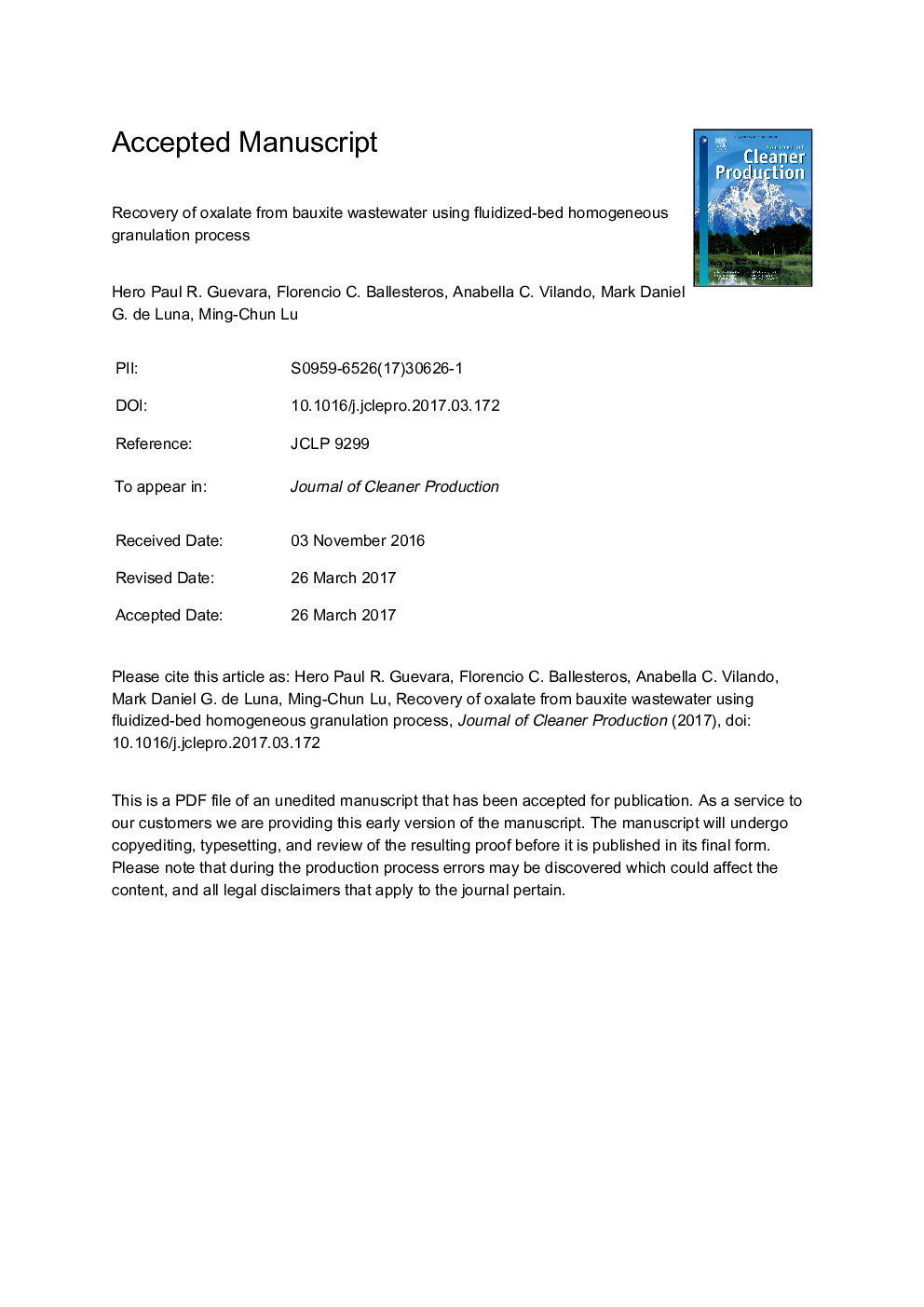| Article ID | Journal | Published Year | Pages | File Type |
|---|---|---|---|---|
| 5479726 | Journal of Cleaner Production | 2017 | 30 Pages |
Abstract
Currently, the aluminum industry is facing a major problem in the disposal of highly alkaline bauxite wastewater. It contains the red mud that is formed during alumina extraction via Bayer process. Approximately, 1.5 t/y of bauxite residue per ton of alumina were produced and continuously increasing up to 150 Mt/y. In this study, the simulated bauxite wastewater was treated using a non-seeded fluidized-bed homogeneous granulation technology. The effect of effluent pH, molar ratio of [Ca+2]in/[C2O4â2]in (1.00, 1.25, 1.50, and 1.75), and influent flow rates (15, 25, and 35 mL minâ1) were evaluated in terms of oxalate removal and granulation efficiency. Increasing the pH of effluent tend to increase the oxalate removal and granulation efficiency. The best effluent pH with highest removal of 87.6% was 5.5 ± 0.05 and for the granulation of 81.7% was 3.75 ± 0.05. Increasing the molar ratio of [Ca+2]in/[C2O4â2]in up to 1.75 exhibits a reduction of oxalate concentration in the bauxite wastewater. This results to the highest oxalate removal of 87.6% and granulation efficiency of 85.6%. At 35 mL minâ1 influent flow rate, the highest oxalate removal of 86.6% and 84.6% granulation efficiency was achieved. A firm and rigid structures of micro fragments of the granules formed was analyzed using SEM and validated by XRD analysis as calcium oxalate monohydrate (COM-CaC2O4·H2O).
Related Topics
Physical Sciences and Engineering
Energy
Renewable Energy, Sustainability and the Environment
Authors
Hero Paul R. Guevara, Florencio C. Ballesteros, Anabella C. Vilando, Mark Daniel G. de Luna, Ming-Chun Lu,
